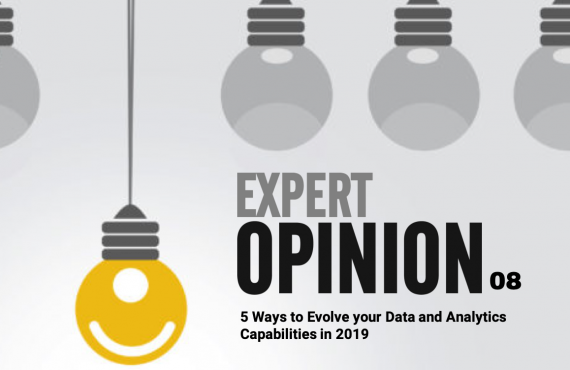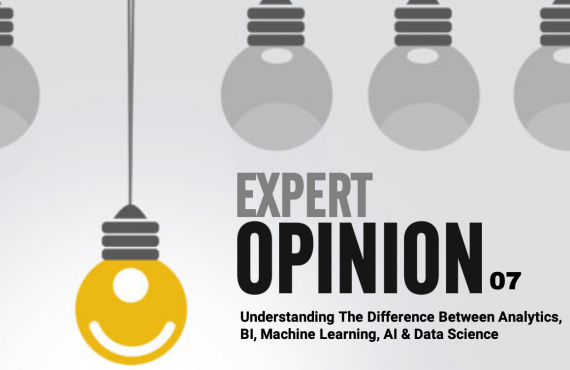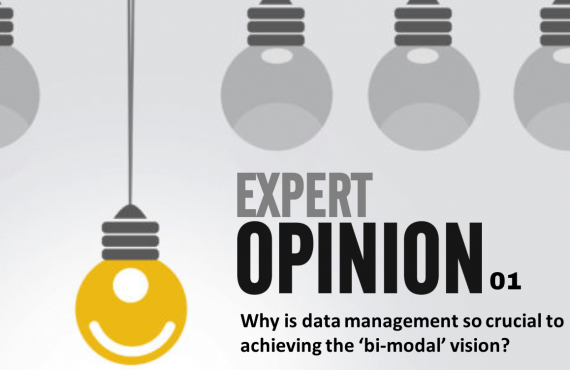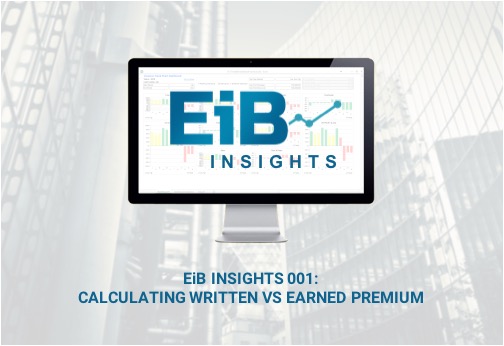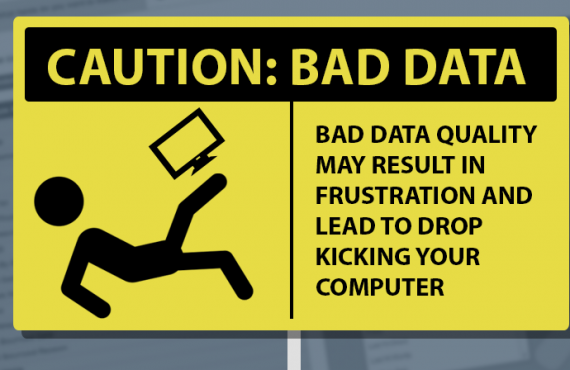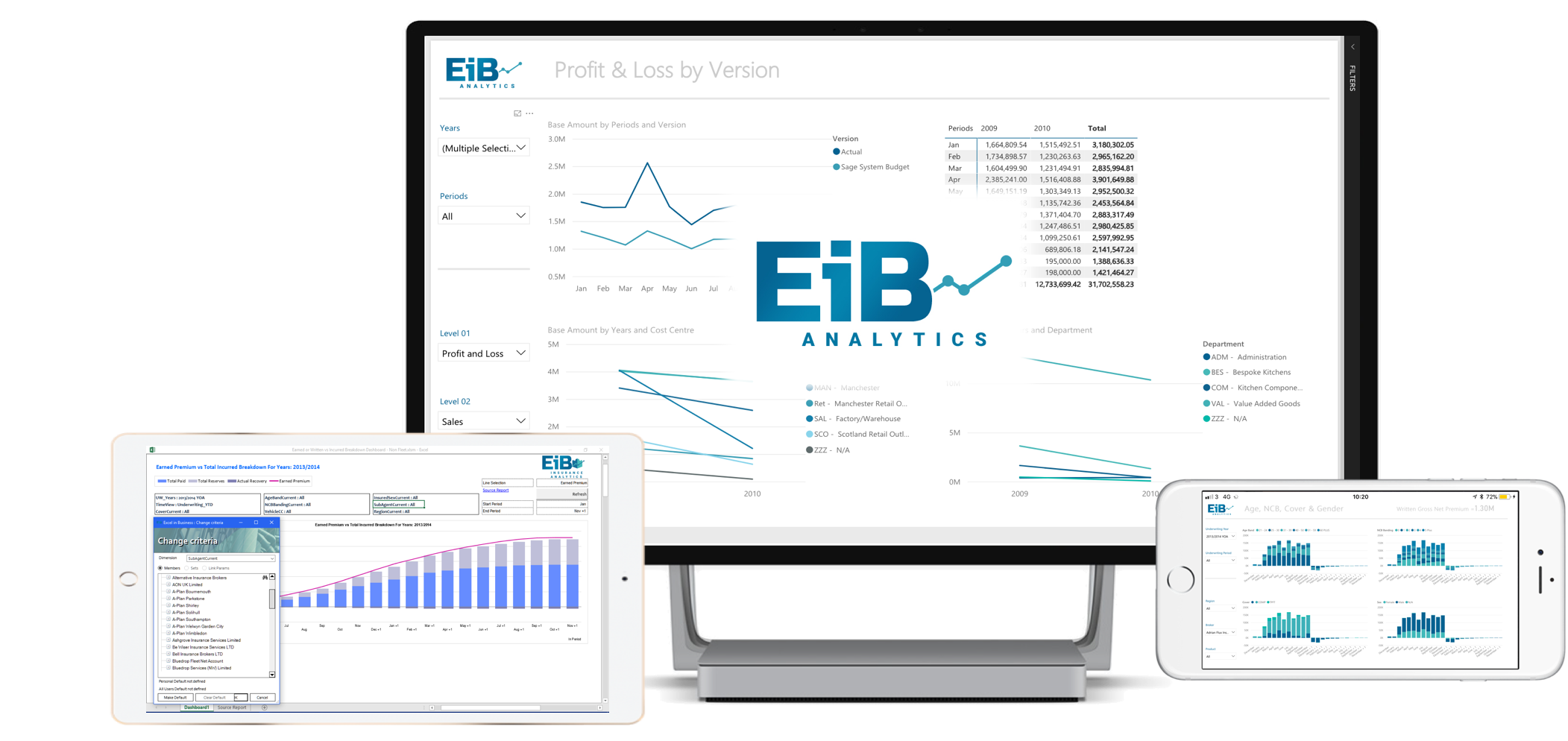
Delivering a Business Intelligence application which dramatically improves your company’s business performance is one of the most rewarding projects you can ever work on.
At EiB we should know, having done so on over 600 successful BI projects using the Microsoft BI infrastructure.
However, it is also challenging with many real world obstacles (both technical and commercial), which is why more than 50% of all BI projects fail.
So, in order to help you successfully deliver enterprise Business Intelligence and line of business reporting applications for your organisation, we’ve produced this free white paper.
If you’re short on time today, we’ve summarised the 10 key steps every BI application project should follow, which we elaborate on in depth in our white paper.
An Executive sponsor for any BI project is a must, along with quantifiable project objectives and clear measurements to govern project success.
Timescales should be clearly formulated and measured. “As soon as” or “before our next budget cycle” are too vague and increase risk and potential project failure.
Scope, and perhaps even more importantly, “out of scope” business requirements must be carefully defined with all business and IT stakeholders.
These requirements should include what’s needed by the application itself and in addition, any changes required by you to operational business processes to support the application.
Prototyping must be considered as a fundamental process within the overall scope of the project, as this will allow for ideas to be explored, tested and amended without additional cost or unnecessary rework at the end.
After initial delivery, when moving on to a second or third phase of development, consideration should be given to establishing development, testing and live environments to ensure continuity and service reliability.
Many projects have reviews only “when needed” or “as required” which is another way of saying “we won’t have a meeting until / unless the mess hits the proverbial fan.”
By then it’s too late and you will miss your deadlines and degenerate into knee jerk reactions to try and get back on track.
So we recommend arranging periodic reviews, proactively rather than reactively, to help ensure your projects remain on schedule.
It is essential that your “day to day” tasks and business as usual (BAU) commitments are built into any BI implementation plan.
Don’t swamp the end user in masses of new “cool” BI tool functionality, focus on the final results and how it improves and replaces their current system. You can add over time, but too much, too soon simply alienates users.
Deliver quick, deliver precise, deliver often, is the mantra for successful BI
There will be data issues you discover that you had no idea of at the project outset, 100% guaranteed! Missing and bad data are two essential areas of focus to ensure your users are not making business decisions on what they think are the facts.
It is therefore imperative that you allow time to systematically eradicate and test all data corrections before thinking of going live with any BI application.
Information presentation and delivery is one of the most exciting and rewarding aspects of your BI application, but is so often rushed or completed poorly.
A well designed dashboard and/or report should be able to inform someone who is not familiar with your business, precisely how well that business is performing. Make sure you take your time to invest the necessary effort on the aesthetics!
Finally, Dashboards are important but are not the answer to everything. Drilling down a nicely formatted Profit & Loss report is often far easier, quicker and concise than drilling down on a chart. Reports and Dashboards are complimentary and not an either / or.
One golden rule of Business Intelligence is that you never really understand the true performance characteristics of an application until you do it!
Ensuring you automate as many processes as possible, will significantly help you to optimise the value of your application to your business.
If your management information requires human intervention to deliver data updates or requires processes to be run manually to deliver report packs, then you have serious business risk and almost a certain point of failure. Business Intelligence must “just happen” each week, month, quarter etc.
End User training and documentation for BI applications are different to what most people generally think. A lot of time generally goes into the training of how to use a particular Business Intelligence product, but not a lot of time goes into what the data means, what assumptions have been made on the data and how timely is the data from a user’s perspective.
Users are not there to learn a product (which they have no interest in doing !) They will only engage as long as they see the Business Intelligence application improving their reports and analyses needed for their job function.
So make sure your documentation is robust and your training focuses on both the information and the application. Keep training simple and add over time.
Always remember that Self Service Business Intelligence only works when…
The data in the reporting database(s) is fully reconciled and eradicated of any erroneous or missing data, there is a clear understanding and definition of terminology, KPIs and calculations, and business logic is precise and fully communicated!
Assuming the above has been completed, End Users will be able to create Reports and Dashboards, some of which will become corporate and some which will remain personal for individual job functions. It is important that standards are developed to ensure which type of report / dashboard a user is using or viewing. In addition, security must be carefully defined to ensure there is an approval process when a “personal report” wants to be published as a “corporate report”.
Self service is about speed, flexibility and business responsiveness. It is not about information or dashboard anarchy!



